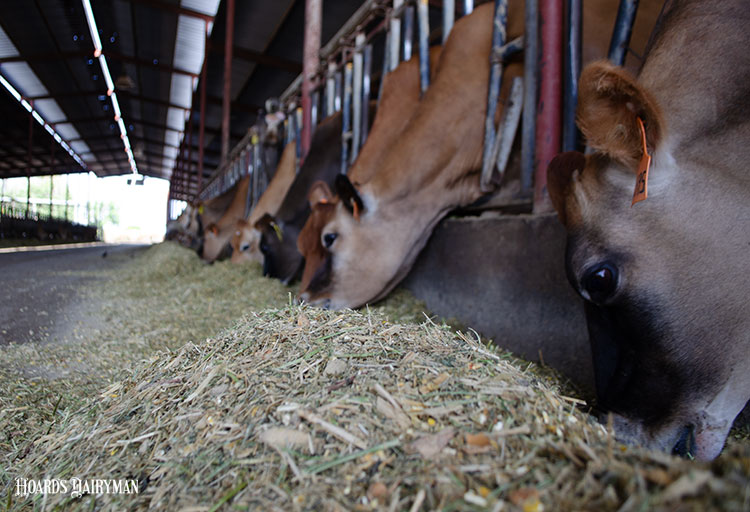
Many dairy producers and their nutritionists are facing a mixed bag of forage quality this season. Fortunately, we have guidelines — I call them guard rails — to help keep your herd out of the ditch on either the high side (intake constraint) or the low side (subacute rumen acidosis and lower milk components) of ration fiber content, degradability, and particle size.
Proper forage neutral detergent fiber (NDF) content and particle size underpins rumen function, and we need to maintain a minimum physically effective NDF (peNDF) of 19% to 20% of ration dry matter (DM). For most feeding scenarios, peNDF between 19% and 23% will be optimal. When using the Penn State Particle Separator to assess the total mixed ration, shoot for less than 5% of the sample on the top sieve (as fed) and between 50% and 60% on the second sieve. This will limit sorting potential of the ration and help ensure the proper balance between eating and resting rumination time.
Useful benchmarks for 30-hour in vitro NDF degradability are above 50% for legumes, above 60% for grasses and conventional corn silage, and above 65% for brown midrib corn silage (as a percent of NDF on a DM basis). NDF degradability is critical given the long-recognized relationship of about 0.5 pound per day more fat-corrected milk for each 1 percentage unit increase in NDF degradability.
Monitoring undegradable NDF (uNDF) helps us predict intake potential of forages. Especially for corn silage-based rations, when uNDF240 (NDF not degraded after 240 hours of in vitro fermentation) exceeds 10% to 11% of ration DM, we often see DM intake decline. Under these conditions, finer forage chopping often boosts intake and milk yield. On the other hand, if uNDF240 is less than 6% or 7%, there may be greater risk of rumen acidosis or milk fat depression.
Finally, there is value in integrating forage particle size and NDF degradability. Physically effective uNDF240 (peuNDF240) combines pef and uNDF240 into one value that seems to predict DM intake better than either uNDF240 or peNDF alone. The pef is the physical effectiveness factor, or percentage of particles retained, on the 4 millimeter sieve of the Penn State Particle Separator or the 1.18 millimeter screen when dry sieving in a laboratory. In fact, peuNDF240 explained over 70% of the variation in DM intake in a data set of eight studies we’ve amassed at Miner Institute. A desirable range for peuNDF240 for many lactation rations appears to be 4.5% to 6% of ration DM.
Interactions between uNDF240, particle size, and rumen fermentable starch are important when trying to optimize milk components, especially milk fat. When uNDF240 is about 7% or less of the ration, then milk fat depression may occur with rumen fermentable starch (RFS) of only 19% to 20% of the ration DM. Avoid RFS-to-uNDF240 ratios greater than 2.8 to limit the risk of low milk fat.
Understanding these fiber guard rails won’t guarantee high herd performance, but they ought to keep your herd on a healthy and productive road — and out of the ditch — as you navigate this year’s forages.








